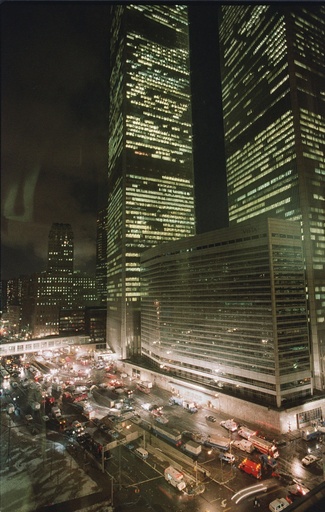NEW YORK (AP) — New York City has marked the anniversary of the 1993 bombing at the old World Trade Center that blew open a massive crater underneath one of the 110-story twin towers, killing six people and injuring more than 1,000 others years before the deadly attacks on Sept. 11, 2001.
The Port Authority of New York and New Jersey held a memorial Mass at St. Peter’s Church in Manhattan on Monday, followed by a solemn ceremony at the 9/11 Memorial and Museum, located near the soaring, 104-story skyscraper that rose in place of the twin towers.
A bell tolled at precisely 12:18 p.m. to mark the time of the Feb. 26 attack, and a moment of silence honored the victims. Attendees then laid roses where their names are inscribed at a reflecting pool representing the footprint of the North Tower, where the underground parking garage bombing happened.
Charles Maikish, who was director of the World Trade Center Department at the Port Authority at the time of the bombing, said at the ceremony that the 1993 attack was “targeted at the heart of our free economic and Democratic system.”
“The intent was to inflict massive loss of human life and a lasting and permanent disruption of our economic system and way of life,” he said. “Well, they failed.”
The 1993 attack was carried out by Islamic extremists who sought to punish the U.S. for its Middle East policies, particularly its support for Israel.
The terror cell detonated approximately 1,200 pounds of explosives in a parked rental van, leaving a five-story, 150-feet-wide crater filled with 4,000 tons of rubble, according to the museum.
Six people were convicted of the attack, including the accused ringleader Ramzi Yousef. A seventh suspect in the bombing remains on the FBI’s most wanted list.
The attack was a harbinger of the Sept. 11, 2001, terror attacks that ultimately felled the city’s tallest skyscrapers, killing nearly 3,000 people in the worst attack on American soil.
Yousef’s uncle, Khalid Sheikh Mohammed, would later become the self-proclaimed mastermind of 9/11, when hijacked planes were used as missiles to strike the buildings.



